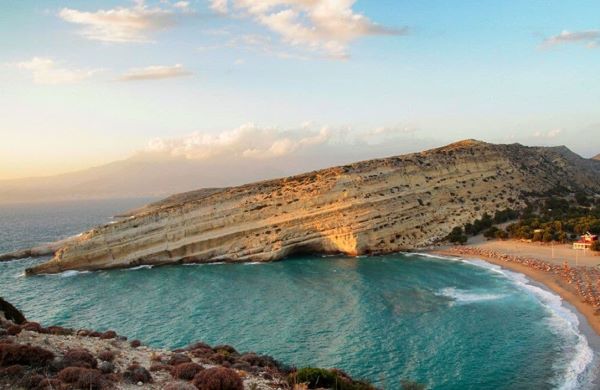
The village of Matala, is built next to the beach in a small cove, southwest of the prefecture of Heraklion, at a distance of 65 km from the city of Heraklion.
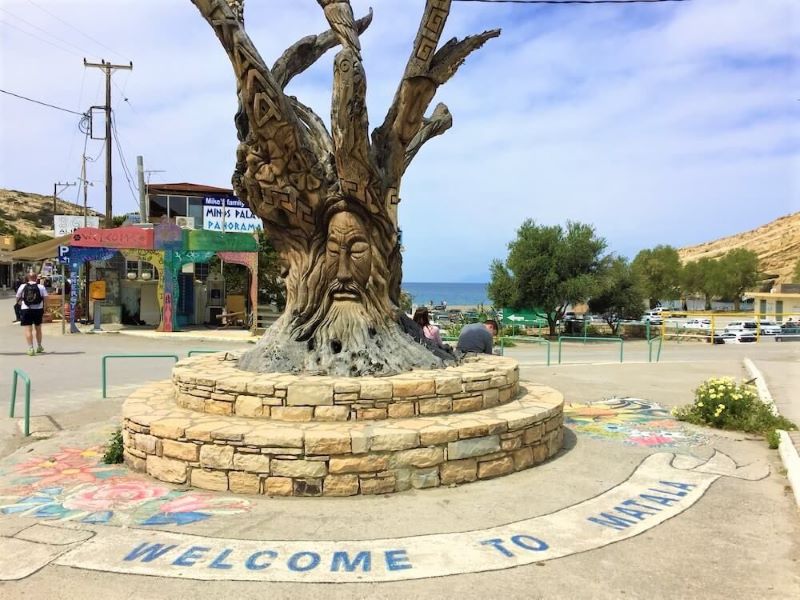
Matala, was the port of Phaistos during the Minoan period, after the destruction of the port of Gortyna by the Romans. Ruins of the ancient city are still visible at the bottom of the sea since the city sank many years ago.
Archaeological excavations have brought to light findings of palaces built for the nobles of the ancient cities, Phaistos and Gortys.
Due to their natural beauty, Matala became a meeting place and shelter for the "children of flowers" in the 60's and 70's.
The bay of Matala is considered one of the most beautiful natural beaches in Crete. The artificial caves that have been carved on the slope of the mountain of the coast, were used as prehistoric houses and places of worship, while during the first and second century, they were also used as tombs.
The caves in combination with the sandy beach, form a semicircle on both sides from which rise up rocks where the spectacle is magical. Today the caves of Matala, are under the protection of the archeological services.
.jpg)
Kokkini Ammos (Red Sand) Beach
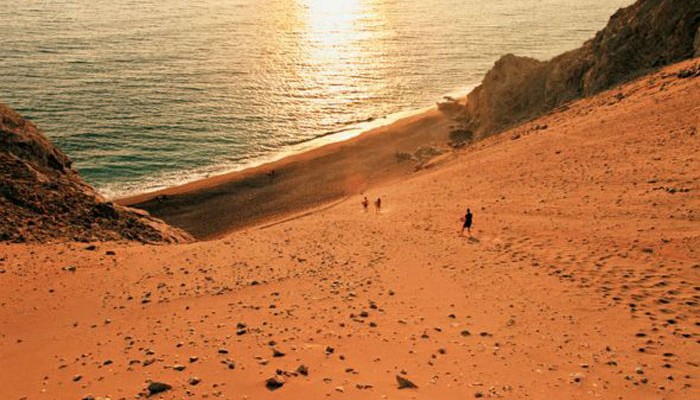 South of Matala, there is a huge rock formation known as the rock of Theosini, which offers a panoramic view of the gulf of Messara.
South of Matala, there is a huge rock formation known as the rock of Theosini, which offers a panoramic view of the gulf of Messara.The rock protrudes from the sea which over the years has extracted a large part to form a natural sea cave called "Kouroupi". This cave provides shelter for wild pigeons and the Mediterranean seal.
The beauty of the coast continues south of the Kouroupi cave, where after a walk along the rock, you reach the charming beach of "Red Sand", a location of particular importance.
Kokkini Ammos is located just 800m south of the famous beach of Matala, in the area of Moudia. To get here you have to follow the signs and walk a path that starts north of the settlement of Matala and crosses the hill Kastri that separates Matala with Kokkini Ammos, climbing some rocks and at the end to descend a steep slope.
After about 25 minutes of walking from Matala, you will see the wonderful beach Kokkini Ammos, from above. If you do not want to walk, you can take a boat from the port of Matala.
This secluded beach is truly unique. Its main feature, hence its name, is the reddish-brown sand that comes from the reddish soils of the area. The colors of the sea, due to the sand, acquire a wonderful green-blue color, which makes it special.
The beach is not organized like the one in Matala, but you can get umbrellas, soft drinks and snacks from a small canteen, which, however, is not always open. It has has been voted one of the best nudist beaches in the world. The northern part is protected by rocky porphyry, which is reminiscent of a miniature of the famous rock of Matala, but without their carved caves. You will also see many carved stones, representing magnificent Minoan and Egyptian sea figures.
Matala of the '70s and the era of the "Hippies"
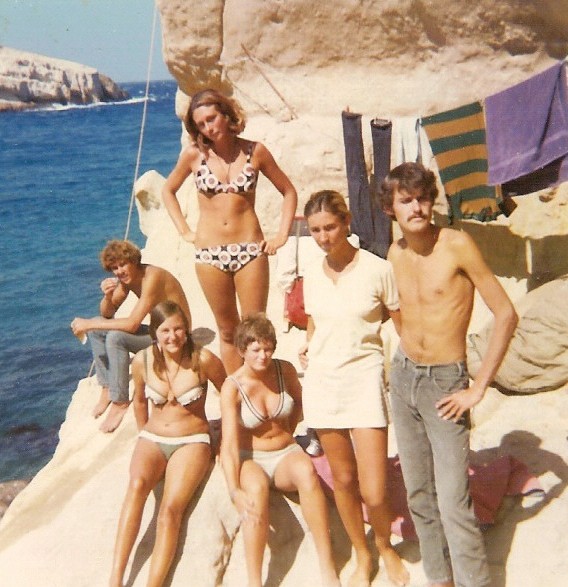
Matala was a refuge for dozens of people from all over the world, the "children of flowers" as they were called in the '60s -' 70s, thanks to the beauty of Cretan nature, combined with absolute freedom.
From 1967 onwards, Matala was a real refuge for many Greeks, as a military dictatorship was imposed on the country, led by Stylianos Pattakos.
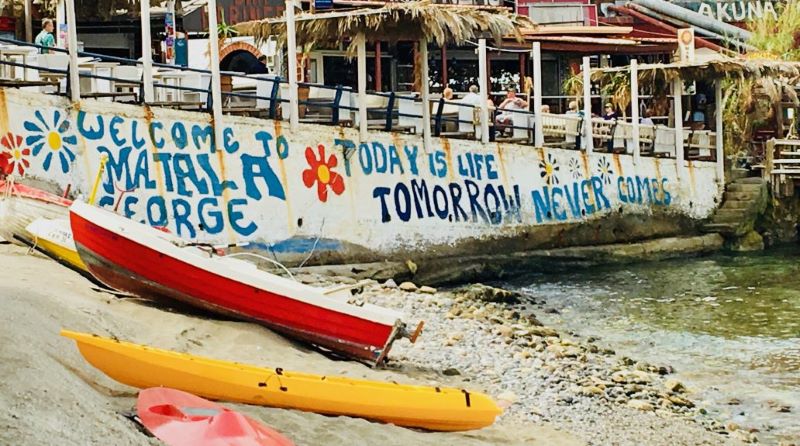 For the "children of flowers", Matala was an ideal location, as a different wind blew in the area around the caves of Matala, the air of carefree, calm and most importantly for the season, freedom.
For the "children of flowers", Matala was an ideal location, as a different wind blew in the area around the caves of Matala, the air of carefree, calm and most importantly for the season, freedom. They were given the opportunity to break away from the usual daily way of life, seeking their personal truth by living like the "Protoplasts", living in the caves of Matala and adopting a different way of life.
Music, meditation, painting, poetry and philosophy were the daily companions of the "flower children", while enjoying the deep blue sea, the warm nights and the sandy beach that came alive every night with their guitars and songs.
Of course, this freedom did not last long, as in the late spring of 1970 the junta, with a military-type operation, "sealed" the caves of Matala.
Matala Beach Festival
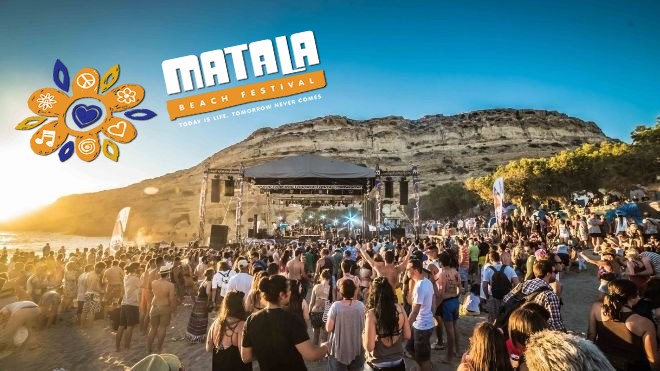 Matala Tourism Development Association supported by the Region of Crete, organizes every year since 2011, the famous Matala Beach Festival.
Matala Tourism Development Association supported by the Region of Crete, organizes every year since 2011, the famous Matala Beach Festival.
.jpg)
During Matala Beach Festival, beside to the main concerts, are taking place also cultural events, such as the Street Painting, Music Workshops, dance, literature, poetry, painting, etc. In addition, activities are held exclusively for the entertainment of children of any age.
Matala Beach Festival has become an institution in the global artistic establishment, with an audience that visits Matala from all over the world, while it is a key pillar of tourism development in the prefecture of Heraklion.
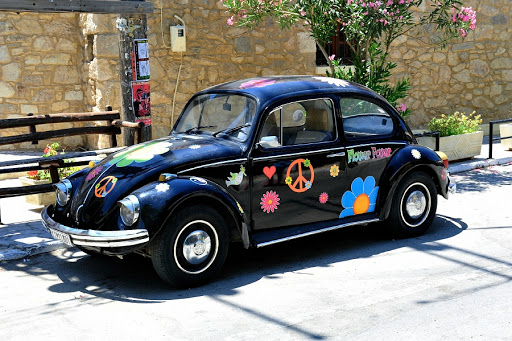
It is also considered as the revival of an era that remained indelible in the history of Crete, the era of the "Hippies" or in other words, the "Children of Flowers".
The love for Matala, influenced many people, who visit the place every year for 50 years since the "Hippies" era, to revive the carefreeness and innocence offered by the famous caves of Matala.
All these factors contributed positively to the idea of creating a world festival, to revive the idea of "hippies".
The aim of the Matala Festival is to evolve every year and become more competitive, more attractive and more innovative, as it reflects the international character of Crete and promotes the cultural, educational and economic prosperity of people of all ages.
The Cave Church of Panagia (Virgin Mary)
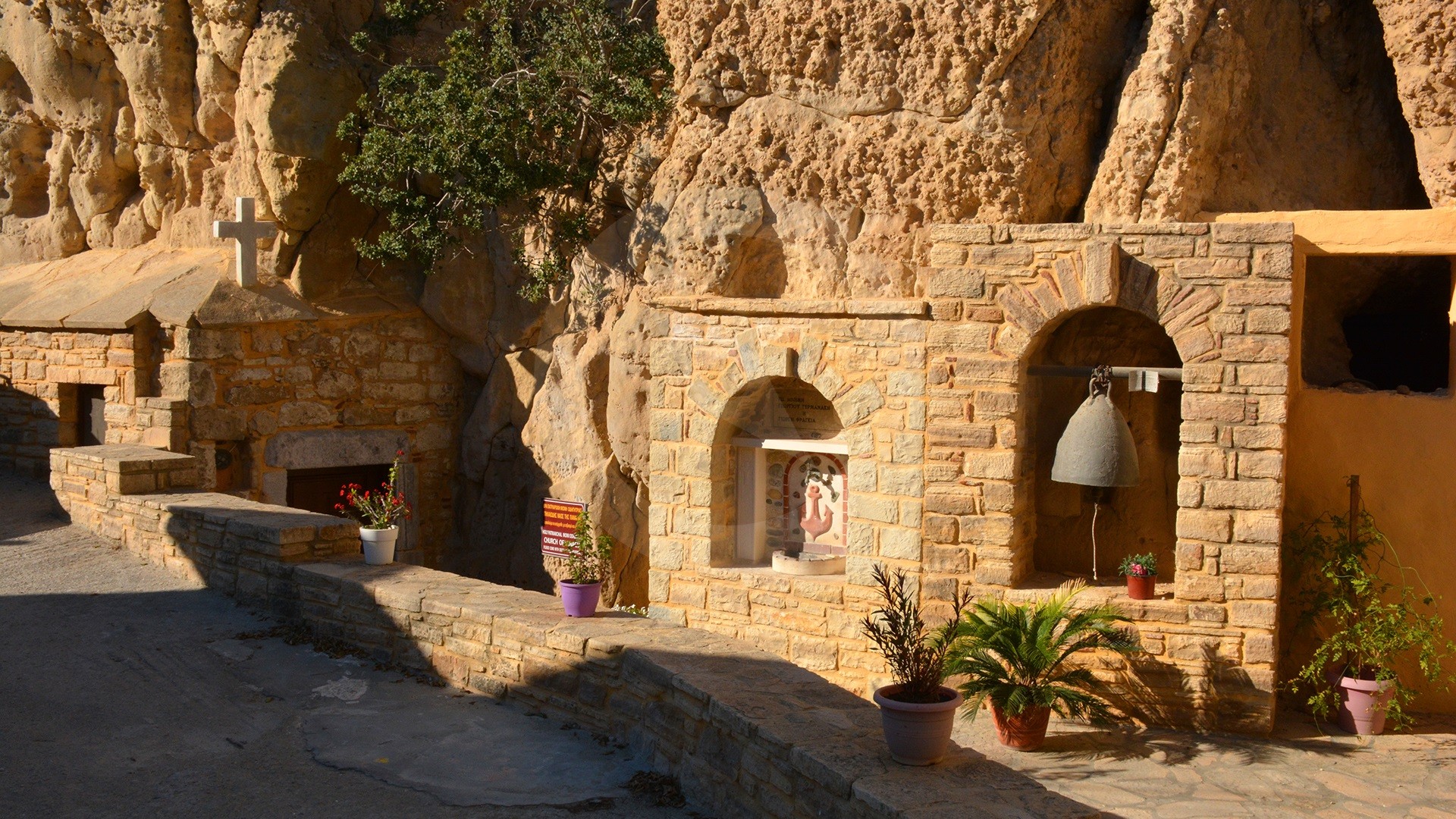 The Cave Church of Panagia in Matala, emerges through a rock. The temple was used by Christians during the period of persecution, as its location, reminiscent of a catacomb, was an ideal place for protection.
The Cave Church of Panagia in Matala, emerges through a rock. The temple was used by Christians during the period of persecution, as its location, reminiscent of a catacomb, was an ideal place for protection.The church, which is built in complete harmony with its natural environment, consists of two marble iconostasis and capitals, which are parts of an older church that existed during the first Byzantine period.
The Church of the Virgin Mary stands out from the small white cross above the entrance, while outside is its low bell tower with the stone fountain dedicated to the memory of George Germanakis.